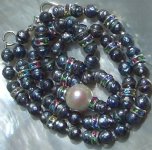With the understanding that I am not an attorney, nor am I attempting to give legal advice, I shall relate something that I observed a few years ago. A patent attorney came into the store that I worked in. The owner of the store has a patent on some very unique jewelry manufacturing tools and was concerned that a certain company might be infringing on his patent. (It turned out, eventually, that they weren't.) However, in the ensuing discussion, the attorney described the difficulties with being able to defend a patent. He told of a company that had hired him to defend their patent on a device that another company was copying. After the folks that hired him (in Canada) were $65,000.00 into their lawsuit, the accused produced a brochure (not even a patent) from an Australian company picturing and describing what was essentially the same device and that pre-dated the patent. Patent determined to be invalid, end of suit and money down the drain.
As for copyrights, I remember reading, more than once, about there being such a thing as an artist's copyright, at least in the U.S., that automatically applies to any original work of art whether registered or not. I'm not an attorney so I'm not sure how this works but I think that this has been in effect for a few decades now.

